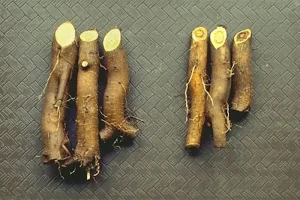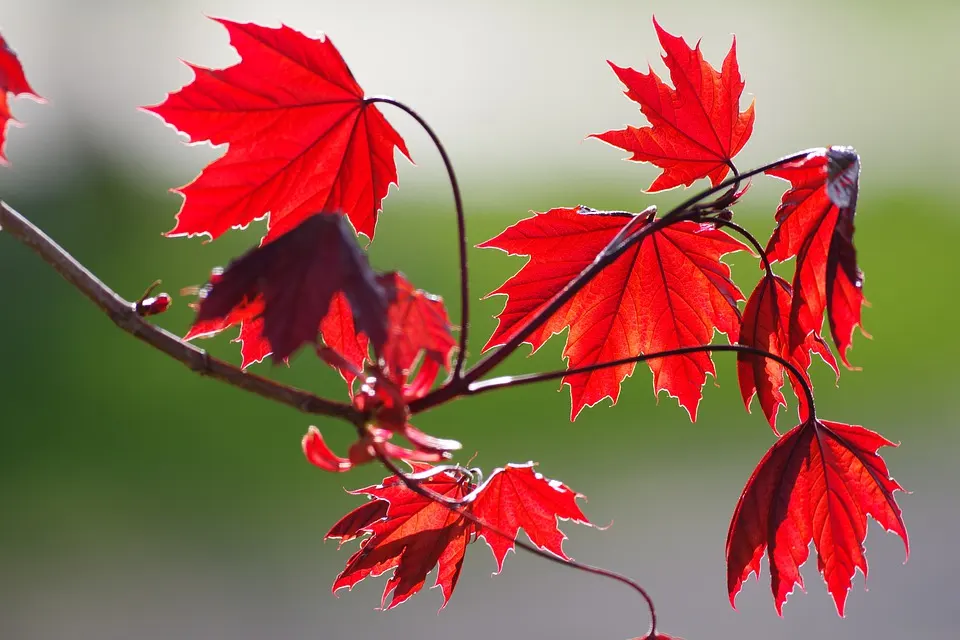How Do You Treat Verticillium Wilt On a Japanese Maple?
Verticillium Wilt is a fungal disease that has no cure. Verticillium Wilt is caused in plants by Verticillium dahliae and V. albo-atrum. These fungi live in the soil and infect a wide range of plants. Japanese Maples are highly susceptible to this fungus.
How would you know if your Japanese Maple is infected with Verticillium? Let’s have a look in the article below.
Symptoms
The symptoms of Verticillium Wilt are:
- The leaves in one section of the plant will turn yellow and shrivel
- Apart, or all, of the tree, will wilt, especially in hot weather but may recover in cooler or wetter conditions.
- Buds fail to open in the spring.
 These symptoms could reflect any number of problems such as poor watering or insufficient watering during hot, dry, windy weather.
These symptoms could reflect any number of problems such as poor watering or insufficient watering during hot, dry, windy weather.
To determine if this is Verticillium Wilt, you will have to cut off one of the wilted branches and carefully peel back the bark.
If you see brown or black streaks in the soft tissue under the bark, you may well have verticillium infection.
If the branch is cut crosswise, you may see a dark circle, and if the branch is cut lengthways, you will see dark lines. Usually, this is in the outermost portion of the branch, but other dark rings could indicate a past infection from which the tree recovered.
Life Cycle of the Fungus
The life cycle of these pathogens on your Japanese Maple bonsai is relatively simple.
As we have said, these pathogens live in the soil and are introduced into the plant via the root system. In the ground, V. albo-atrum exists as a mycelium (a network of white filaments), and V. dahliae exists as microsclerotia (a tiny seed-like structure).
The length of time these are viable varies from around four years for the mycelium but up to 10 or 15 years for the microsclerotia. Many factors, such as temperature, water, and soil chemistry, will influence the length of time the fungus remains viable.
When the fungus detects the roots of a suitable host, it grows towards the roots and enters via tiny wounds in the root. All plants have these minor wounds caused by the soil abrading the roots.
Once the fungus enters the roots, it makes it’s way up the tree’s vascular (xylem) system. It produces conidia, and once introduced into the xylem, it rapidly spreads through the tree. The tree naturally reacts to this invasion, and in trying to protect itself, the xylem is often blocked, causing the symptomatic wilting.
The fungus will form its survival structures if the tree dies, and lie in the soil again. When a suitable host plant grows nearby, the entire life cycle will begin again.
The most common method by which this fungus spreads is via the soil, but it can also be distributed through the root system when suitable hosts are grown close together. In this case, where the roots from one plant cross with an infected plant, the fungus will spread from one plant to the next.
Some insects such as leaf-cutter bees and aphids have been known to transport the conidia from one plant to another. Because these insects cause damage to plants, the fungus can be introduced through the wounds caused by an insect carrying the spores.
Be aware that the water that drains from the bottom of the pot may also contain the spores, which are then transported to the rest of your garden.
Now that we know what it is and what it looks like, can I cure it?
Treatment
Unfortunately, no, you cannot cure it. No fungicide will remove the fungus from an infected plant.
In commercial applications there are some dangerous chemicals which can be used to try and resurrect a field but it is unlikely that these will be available to the bonsai grower.
If this is a young tree, within which you are not invested, perhaps the best option would be to destroy the tree and burn it. The ground that it was growing in must be placed on a flat tray and baked in the oven to kill all the spores, and the bowl must also be thoroughly cleaned and baked if possible. A strong solution of household bleach will also destroy the fungus.
If you suspect that the growing medium you have purchased is at fault, then all the pots that contain it will have to be redone. If any of those trees are susceptible to the fungus, then you will need to deal with them as well. You can find a list of sensitive plants here.
It would be best not to dispose of this infected medium in the garden – bake or use a bleach solution to kill the fungus.
If the tree is a prime specimen, you can repot it in clean soil after doing all you can to wash the infected soil off the roots. Then feed it with a rich fertilizer containing both potassium and nitrogen and water well to encourage growth as much and as fast as possible. This may develop xylem around the fungus and restore the damaged portions of the tree, providing the damage was not too severe.
The fungus will always remain in the tree, so be aware that when repotting or trimming the tree, you do not inadvertently transfer the spores from it to an uninfected tree.
Conclusion
This is a horrid disease that is not easy to eradicate. As a serious enthusiast, ensure that you purchase plants from reputable nurseries so you don’t introduce the fungus.
Once it has infected one of your plants, the best option is to destroy the plant and thoroughly disinfect the pot and growing medium to destroy the fungus.
If you choose to keep the tree, separate it from the rest of your specimens, have separate implements for the tree, and be careful with watering and disposing of old growing medium.






